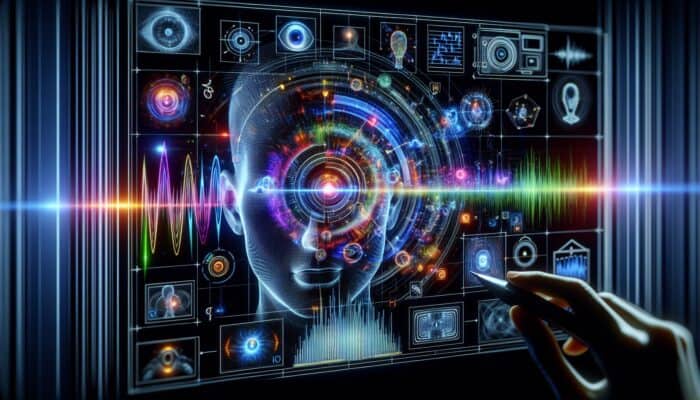Effective Techniques to Optimize Video Content for AI Analysis
Grasping the Fundamentals of AI Video Analysis

When it comes to optimizing videos for AI, understanding artificial intelligence (AI) video analysis is essential. This involves sophisticated algorithms designed to efficiently process video data and extract significant insights for comprehensive analytics. To optimize videos effectively for AI systems, one must grasp how these technologies evaluate both visual and auditory elements. AI examines various video components, such as objects, movement, audio signals, and even facial expressions. By mastering these dynamics, content creators can enhance their productions for maximum clarity and impact.
Enhancing AI understanding dramatically improves the technology's ability to generate meaningful summaries from your content. For example, employing structured narratives along with logical video segmentation helps AI comprehend the flow of information, which is crucial for producing accurate summaries. By focusing on these strategies, you will not only enhance AI efficiency but also enrich the viewer experience, aligning with the overarching objective of providing engaging and informative content.
A thorough comprehension of how AI video analysis functions is fundamental to effective video optimization. By mastering the interaction between diverse video elements and AI processing, creators can ensure their videos are not only visually appealing but also rich in data that AI can utilize for generating detailed overviews.
The Critical Role of Metadata in Video Optimization
Metadata plays a pivotal role in enhancing AI's capability to classify and interpret video content accurately. This information, which includes tags, descriptions, and other contextual details, serves as a navigation tool for AI algorithms, directing them towards effective video analysis. By embedding relevant metadata, content creators can markedly improve the chances of their videos being accurately indexed and categorized by AI systems.
When optimizing videos, it is vital to include metadata that accurately reflects the content. Think about the keywords that best represent the themes, ideas, and visuals in your video. This approach enables AI to categorize the video within suitable contexts, allowing it to produce significant overviews. Metadata should extend beyond simple tags; extensive descriptions can greatly enhance AI‘s understanding, offering clarity about the video's goals and messages.
Furthermore, as <a href="https://limitsofstrategy.com/technology-and-hearing-impaired-assistive-devices/">AI technology</a> progresses, the importance of metadata continues to grow. Keeping it updated and relevant guarantees that videos remain accessible for AI analysis, ultimately improving the quality and depth of AI-generated overviews. Therefore, dedicating time to develop robust metadata is not merely advantageous; it is essential for optimizing video performance.
Ready to Listen Together?
Implementing Best Practices for Structuring Video Content
Properly structuring video content is crucial for enhancing AI understanding. A well-organized video allows AI algorithms to follow the narrative seamlessly, ensuring that segments are distinct and transitions are logical. This clarity is vital for producing coherent overviews. Organizing video content involves segmenting it into distinct sections, each conveying a specific idea or theme. Smooth transitions between these segments further help AI grasp the overall message.
To achieve optimal structuring, creators should adopt the following best practices: divide the video into clearly defined sections, use engaging transitions, and maintain a logical flow. This structure can encompass an introduction that outlines the main points, detailed segments that delve into each topic, and a conclusion that reiterates the key messages. Such a format not only benefits AI but also enhances viewer engagement, making the content more digestible.
A structured approach enables AI to extract meaningful data from videos while also catering to human viewers. By prioritizing clarity and organization, you can develop content that effectively serves both AI and your audience.
Innovative Approaches to Enhance AI Video Comprehension
Assessing the Impact of Visual Clarity on AI Interpretation
Visual clarity is vital for AI's ability to process and accurately interpret video content. High-quality visuals empower AI algorithms to effectively identify and analyze various elements within a video. When videos are clear and visually compelling, they provide abundant data for AI to utilize, enhancing the precision and depth of AI-generated summaries.
To enhance visual clarity, consider using the following essential techniques:
- Employ high-resolution footage to capture intricate details.
- Ensure consistent lighting to avoid distractions and amplify clarity.
- Frame subjects appropriately to maintain focus on critical elements.
- Avoid cluttered backgrounds that may confuse AI interpretation.
- Incorporate straightforward, direct motion graphics.
- Utilize well-balanced and vibrant colors to elevate visual appeal.
- Implement steady camera work to eliminate unnecessary shaking.
- Consider color grading that enhances visual quality without distorting reality.
Applying these visual clarity techniques not only facilitates AI processing but also enriches the viewer's experience, resulting in a more engaging and informative presentation. The significance of high-quality visuals cannot be overstated; they lay the groundwork for more effective AI-generated content, ultimately benefiting your video's reach and effectiveness.
Examining the Role of Audio in AI Video Processing
Audio components—including speech, sound effects, and background music—play a crucial role in AI's understanding of video context. Clear and well-optimized audio enhances the AI's capacity to interpret the video's message, thereby enriching overall comprehension. When optimizing audio, it is essential to ensure that all elements are balanced and free from distractions, enabling AI to concentrate on the primary audio content.
To optimize audio for clearer AI overviews, consider the following strategies: use high-quality recording equipment, eliminate background noise, balance sound levels for clarity, and thoughtfully incorporate sound effects to enhance context rather than detract from it. These measures will create an audio landscape that supports AI during its processing tasks while also improving the overall viewing experience.
By prioritizing audio clarity, you significantly elevate the quality of AI overviews. Properly optimized audio not only aids AI in its analysis but also engages audiences more effectively, making it a critical aspect of video optimization that should never be overlooked.
Boosting AI Comprehension with Strategic Text Overlays

Text overlays can significantly enhance AI's ability to interpret video content, serving as direct data points that guide AI in understanding the video's context and message. When strategically employed, text overlays provide additional context that may not be fully captured through visuals and audio alone.
To effectively utilize text overlays, careful consideration of their placement and content is essential. For maximum impact, overlays should be concise, relevant, and positioned so they do not obstruct key visuals. Use text to highlight crucial points, reinforce messages, or clarify complex terms. This approach not only aids AI processing but also makes the content more accessible to viewers.
By strategically incorporating text overlays, you create dual benefits: enhancing AI comprehension while simultaneously improving viewer engagement. This technique fosters a richer interaction between the video content and its audience, ensuring that essential information is communicated clearly and effectively, thus promoting a deeper understanding of the material presented.
Reinforcing the Importance of Metadata in AI Video Interpretation
As previously highlighted, metadata is fundamental in enriching AI's understanding of video content. By providing contextual information through meticulously tagged videos, creators can significantly enhance AI's ability to categorize and accurately interpret content. The more detailed and relevant the metadata, the better AI can perform its analysis.
Practically, effective metadata should include titles, descriptions, keywords, and timestamps that align seamlessly with the video’s content. This not only promotes improved indexing but also assists viewers in discovering relevant content more easily. Ensuring that metadata remains current and accurately reflects the video's focus is essential in a rapidly changing digital landscape.
Investing in substantial metadata practices guarantees that AI technologies can effectively grasp the complexities of video content, leading to richer and more insightful overviews. Ultimately, a robust metadata strategy is vital for optimizing videos for AI analysis, laying the groundwork for improved visibility and enhanced audience engagement.
Utilizing Machine Learning for Enhanced AI Insights
Advanced machine learning models are critical tools for enhancing AI's comprehension of video content. These models employ algorithms that learn from data inputs over time, improving their ability to generate precise insights from videos. Regular updates and training of these models are essential for achieving accurate AI overviews, as they adapt to evolving content trends and viewer behavior.
To effectively leverage machine learning, content creators should integrate model training into their video optimization strategies. This may involve analyzing past performance metrics, introducing new datasets for training, and continually employing techniques to refine the models. By doing so, creators can ensure that AI technologies remain at the forefront of video analysis capabilities, offering the most relevant insights based on real-world applications.
Moreover, as machine learning technologies continue to advance, the potential for more sophisticated insights expands. By embracing these advancements, you enhance AI's interpretation abilities while also developing a more nuanced understanding of viewers' needs and preferences, ultimately leading to more engaging and effective video content.
Expert Insights on Optimizing Video Content for AI Analysis

Identifying Current Trends in AI Video Optimization
Remaining informed about the latest trends in AI video optimization is crucial for ensuring that videos meet the evolving demands of AI technologies. Emerging trends frequently shape how AI processes and analyzes video content, directly affecting the effectiveness of the generated overviews. Current innovations include the increasing integration of augmented reality (AR) and virtual reality (VR), which enhance viewer engagement and provide richer data for AI analysis.
For instance, employing AR in educational videos allows viewers to visually interact with concepts, offering AI a broader spectrum of data to analyze. Similarly, VR experiences immerse users in environments where AI can collect contextual information more effectively. These innovations not only enhance viewer experiences but also facilitate deeper insights for AI, showcasing the potential of cutting-edge technologies in video optimization.
Furthermore, the rise of 360-degree video content introduces new dimensions for engagement and interpretation. As these trends continue to develop, they promise to transform how AI interacts with video content, underscoring the importance of staying ahead in optimization strategies.
Enhancing AI Video Summaries Through Expert Collaboration
Professionals can play an essential role in improving AI video analysis through their specialized knowledge and insights. Their expertise often leads to the development of more accurate and comprehensive overviews, aiding content creators in aligning their strategies with best practices in video optimization. Collaborative efforts with experts can yield actionable steps, such as conducting thorough pre-production planning to ensure that all elements are optimized for AI.
Experts recommend focusing on high-quality production standards, including lighting, sound, and video clarity, as these factors significantly influence AI‘s ability to analyze content effectively. Additionally, involving data scientists in the optimization process can provide valuable insights into how AI interprets various elements in videos, enabling a more tailored approach to video creation.
Moreover, maintaining regular engagement with advancements in the industry allows experts to identify new techniques and tools that can further enhance AI video overviews. This proactive approach ensures that content remains relevant and aligned with the latest developments in AI technology, ultimately leading to superior video performance.
Recommended Tools for Optimizing Videos for AI Analysis
Experts frequently recommend specific tools that can enhance AI's ability to process and analyze videos effectively. These tools streamline the optimization process while offering valuable insights into performance metrics. Notable recommendations include video editing software that integrates with AI analytics platforms, enabling seamless updates and enhancements.
Additionally, machine learning platforms like TensorFlow can be instrumental in training AI models for improved understanding and analysis. Tools such as Adobe Premiere Pro and Final Cut Pro are also favored for their high-quality editing capabilities, allowing for precise adjustments that enhance video clarity and audio quality.
Experts emphasize the significance of utilizing tools that offer user-friendly interfaces while still providing advanced functionalities, ensuring that content creators can optimize videos effectively. By leveraging these tools, creators can significantly improve the quality of their AI video overviews, positioning their content for greater visibility and engagement.
Essential Strategies for Enhancing AI Video Summaries
Effective Techniques for Improving AI Video Optimization
Implementing proven strategies is fundamental for enhancing AI's video processing capabilities. These strategies yield more detailed and accurate overviews, ensuring that both AI systems and viewers can effectively grasp the content. Key strategies include utilizing high-resolution footage, employing structured storytelling, and effectively leveraging strategic metadata.
- Incorporate consistent branding throughout videos for easy recognition.
- Use captivating visuals and animations to illustrate key concepts.
- Implement chapter markers for easier navigation and comprehension.
- Regularly review and update content to maintain its relevance.
These strategies should be combined with ongoing analysis of AI performance metrics to identify areas for improvement. By consistently refining these approaches, content creators can enhance the quality of AI overviews and maximize viewer engagement.
Understanding the Impact of Video Duration on AI-Generated Overviews
Video duration plays a significant role in AI's processing efficiency and the overall quality of overviews. Research indicates that shorter, focused videos often yield better results in both viewer engagement and AI analysis. Concise content facilitates clearer communication of ideas, enabling AI to interpret and summarize them more effectively.
Producing brief, impactful videos that convey essential information can greatly enhance AI's ability to generate actionable insights. It is crucial to strike a balance between providing sufficient information to be informative while avoiding excessive length that may dilute the message. Keeping videos concise and targeted assists in maintaining viewer attention while supporting AI comprehension.
Ultimately, understanding the influence of video length on AI processing is vital for optimizing content to achieve effective overviews. By emphasizing brevity and clarity, you can significantly enhance the overall quality of AI analysis and viewer engagement.
The Importance of Consistent Video Quality for AI Processing
Consistency in video quality is crucial for ensuring that AI can generate accurate overviews. High production standards contribute to a clearer understanding of content, aiding AI in its analysis. By adhering to stringent quality benchmarks—including resolution, color grading, and sound clarity—you establish a solid foundation for optimal AI processing.
Inconsistent quality can confuse AI algorithms, leading to inaccurate interpretations and subpar summaries. Therefore, content creators should establish clear production guidelines and adhere to them across all videos. This encompasses everything from appropriate lighting and sound design to editing techniques that enhance visual clarity.
Ultimately, consistent quality not only benefits AI analysis but also fosters trust and engagement among viewers. By prioritizing high production standards, you can significantly enhance the effectiveness of AI video optimization, resulting in clearer and more accurate overviews.
Avoiding Common Pitfalls in AI Video Optimization
Common Mistakes to Avoid in AI Video Optimization
Recognizing and avoiding common errors is essential for optimizing videos for AI. Mistakes in this process can hinder AI's ability to analyze content effectively, resulting in less impactful overviews. Some frequent missteps include neglecting metadata, poor audio quality, and inconsistent lighting.
- Failing to regularly update metadata and keywords.
- Utilizing low-resolution video, which undermines clarity.
- Ignoring audio quality, leading to unclear speech.
- Neglecting optimization for mobile viewing, which is increasingly crucial.
By identifying these common pitfalls, content creators can take proactive measures to avoid them. Ensuring that every aspect of video production is optimized for AI will lead to better overviews and a more engaging viewer experience.
The Consequences of Poor Lighting on AI Video Processing
Poor lighting can dramatically obscure details, complicating AI's ability to process videos accurately. Insufficient lighting diminishes visual quality and hinders AI's capacity to identify and analyze critical elements within a video. When lighting is inconsistent or inadequate, it can lead to misinterpretations and inaccuracies.
To ensure optimal lighting, creators should invest in high-quality lighting equipment and implement effective techniques. This may include using soft boxes, ring lights, or natural light sources to effectively illuminate subjects. Proper lighting ensures that all details are visible and clear, allowing AI to process video content accurately.
Prioritizing good lighting is crucial for enhancing AI comprehension and generating quality video overviews. By ensuring that lighting conditions are optimal, creators can significantly improve the effectiveness of their videos for AI processing.
The Impact of Inconsistent Audio on AI Video Summaries
Inconsistent audio quality can confuse AI, resulting in less accurate video summaries. Clarity in audio is essential for accurate AI interpretation, as fluctuations in sound quality can impede AI's ability to distinguish speech or critical sound cues. Maintaining clear and consistent audio throughout videos is vital for optimal AI processing.
To achieve consistent audio quality, creators should use high-quality microphones and test sound levels before recording. Background noise should be minimized, and post-production editing should involve balancing sound levels to ensure optimal audio quality. By prioritizing audio consistency, you enhance AI's ability to accurately process and interpret content.
Moreover, clear audio improves viewer experience, making the content more engaging and accessible. By ensuring audio quality remains high and consistent, you not only support AI in generating better overviews but also cater to your audience's needs.
Advanced Techniques for Optimizing Videos for AI
Harnessing Machine Learning to Enhance AI Insights
Machine learning provides advanced techniques for improving AI's video processing capabilities, resulting in more detailed and insightful analyses. By leveraging machine learning models, content creators can enhance AI's ability to analyze patterns, identify key themes, and extract relevant data from videos.
Implementing machine learning requires continuous training of algorithms with diverse datasets, enabling AI to adapt to various content types and genres. This adaptability is crucial for generating accurate overviews across different contexts, ensuring that AI maintains a high level of comprehension regardless of content complexity.
Furthermore, machine learning can facilitate real-time analytics, providing immediate feedback on video performance and viewer engagement. By analyzing this data, creators can refine their content strategies, ensuring that videos remain relevant and engaging for their audience while maximizing AI's analytical capacity.
Leveraging Semantic Analysis to Enhance AI Video Summaries
Semantic analysis improves AI's capacity to understand context and meaning within videos, resulting in more comprehensive and accurate summaries. By employing semantic analysis techniques, AI can delve beyond surface-level interpretation, uncovering the underlying themes and messages conveyed through visuals and audio.
To implement effective semantic analysis, creators should focus on producing content rich in context and nuance. This might involve utilizing metaphors, complex narratives, and layered messages that challenge AI to interpret the material more deeply. By crafting content that encourages semantic analysis, you empower AI to generate richer, more detailed overviews that resonate with viewers.
As AI technologies evolve, the use of semantic analysis will become increasingly vital. By prioritizing this approach in video optimization, creators can enhance AI's comprehension and ultimately improve the quality of insights derived from their content.
The Role of Natural Language Processing in Enhancing Video Optimization
Natural Language Processing (NLP) is essential for improving AI's ability to interpret spoken and written content in videos, thereby elevating the overall quality of overviews. NLP enables AI algorithms to understand and analyze linguistic nuances, facilitating a more accurate interpretation of dialogue and text overlays in video content.
Incorporating NLP into video optimization involves ensuring linguistic elements are clear and easily understandable. This may include avoiding jargon or complex language that could confuse AI processing. By focusing on clear language and subtitles, content creators can significantly enhance AI's ability to comprehend content.
As NLP technology continues to advance, it will increasingly influence how AI interacts with video content, enriching the depth of insights generated. By emphasizing NLP considerations in video optimization, you can greatly improve the accuracy and relevance of AI-generated overviews, making your content more accessible and engaging.
Measuring the Success of AI Video Optimization
Key Metrics for Evaluating AI Video Optimization Effectiveness
To assess the effectiveness of AI video optimization, specific metrics should be utilized to evaluate the quality of AI-generated overviews. Key metrics include viewer engagement rates, audience retention, click-through rates, and feedback on clarity and comprehension. These indicators provide valuable insights into how effectively AI analyzes and interprets video content.
Monitoring these metrics enables creators to identify areas for improvement, helping refine their content strategies for enhanced performance. By consistently measuring success and adjusting tactics accordingly, you ensure that videos remain optimized for AI analysis, leading to more accurate and engaging overviews.
Utilizing A/B Testing to Refine AI Video Overviews
A/B testing allows creators to compare different video optimization strategies, resulting in more effective AI-generated overviews. By testing variations in content, structure, metadata, and visual elements, you can determine which factors yield superior AI performance and viewer engagement.
For effective A/B testing, it is essential to establish clear objectives and performance indicators in advance. This ensures that the results provide actionable insights. By analyzing the outcomes of these tests, creators can refine their optimization strategies, leading to improved AI comprehension and more engaging video content.
Integrating A/B testing into your optimization process facilitates a data-driven approach to content creation, ensuring that videos continuously evolve to meet the needs of both AI and the audience.
The Significance of User Feedback in Enhancing AI Video Optimization
User feedback is invaluable in improving the effectiveness of AI video overviews. By understanding viewer perspectives and experiences, creators can gain insights into the strengths and weaknesses of their video content. This feedback helps refine optimization strategies to better cater to audience needs.
Encouraging feedback through surveys, comments, and social media engagement allows creators to gather crucial data on how well AI understands and represents their videos. By analyzing this feedback, adjustments can be made to improve clarity, engagement, and overall effectiveness.
Prioritizing user feedback is essential for continuous improvement, ensuring that video content remains relevant and aligned with audience expectations. By valuing viewer input, creators can enhance AI video optimization, resulting in richer and more accurate overviews.
Looking Forward: Future Trends in AI Video Optimization
Emerging Technologies Transforming AI Video Optimization
Emerging technologies are set to significantly enhance AI's video processing capabilities, leading to more advanced analysis and overviews. Key advancements include the integration of artificial intelligence with augmented and virtual reality, creating immersive experiences that facilitate deeper data collection and analysis.
Additionally, developments in machine learning are enabling real-time processing capabilities, allowing AI to analyze content as it is being created. This shift opens up new avenues for immediate feedback and optimization, ensuring that videos consistently align with viewer preferences and AI capabilities.
As these technologies continue to evolve, staying updated about their developments will be vital for optimizing videos effectively. By adopting emerging technologies early, content creators can position themselves at the forefront of video optimization, ensuring their content remains relevant and engaging.
The Future Development of AI Video Optimization
The evolution of AI video optimization will be marked by increasingly sophisticated algorithms capable of performing deeper analysis and interpretation. As AI technologies advance, creators will need to adapt their strategies to incorporate these developments, ensuring that their videos remain optimized for enhanced comprehension.
Future optimization techniques may involve greater reliance on machine learning, allowing AI to learn from viewer interactions and preferences over time. This data-driven approach will enable more personalized content experiences, catering to specific audience needs and enhancing engagement.
As AI continues to evolve, the potential for improvement in video analysis will expand, yielding richer insights and more comprehensive overviews. Staying informed on these changes will be critical for content creators to ensure their videos remain relevant and impactful.
The Influence of AI Advances on Video Overviews
Advancements in AI technology will continually enhance video processing and overview generation capabilities. As algorithms become more refined, AI's ability to interpret complex narratives, understand context, and extract meaningful data will significantly elevate the quality of video overviews.
This ongoing evolution will likely lead to more accurate and nuanced insights, allowing content creators to tailor their strategies based on AI-generated data. By embracing these advancements, creators can produce content that captivates viewers while offering comprehensive and precise overviews through AI analysis.
Ultimately, the impact of AI advancements on video overviews promises a future where content optimization is more effective, viewer engagement is stronger, and insights are richer than ever before.
Practical Approaches for Effective AI Video Optimization
Simple Strategies to Optimize Videos for AI
Implementing straightforward yet effective strategies can significantly enhance AI's video processing capabilities, leading to improved overviews. These simple approaches can streamline the optimization process and elevate overall content quality.
- Always utilize high-definition video to ensure clarity.
- Enhance audio quality with quality recording equipment.
- Utilize well-structured metadata for efficient categorization.
- Ensure consistent lighting throughout the video.
By integrating these tips, you establish a solid foundation for optimizing videos effectively. Consistent application of these strategies will lead to improved AI performance and richer video insights, making your content more engaging and accessible.
The Necessity of Regularly Updating Video Content
Regularly updating video content is essential for maintaining relevance and ensuring that AI overviews remain current. Fresh content not only enhances viewer engagement but also improves AI's processing accuracy, as it adapts to new information and trends.
Updating videos can involve refreshing metadata, revising visuals, and incorporating new insights that align with audience interests. By keeping content current, you ensure that it meets the evolving expectations of both viewers and AI systems, leading to improved comprehension and engagement.
Ultimately, prioritizing regular updates helps maintain the effectiveness of AI video optimization, ensuring that insights remain valuable and relevant over time. By committing to continual updates, you position your content for sustained success in a dynamic digital landscape.
Enhancing AI Video Overviews Through Collaboration
Collaboration among different experts can greatly enrich AI video overviews, leveraging diverse skills for optimal results. By engaging professionals from various fields—such as data scientists, video producers, and subject matter experts—content creators can ensure that their videos are well-rounded and optimized for AI analysis and interpretation.
Collaborative efforts yield more accurate insights, as experts contribute their diverse perspectives and knowledge bases to inform a comprehensive understanding. This multifaceted approach enhances the overall quality of the content, facilitating richer data collection and interpretation by AI systems.
Moreover, fostering collaboration encourages innovation, as teams can experiment with new techniques and strategies that enhance both viewer engagement and AI comprehension. By capitalizing on the strengths of multiple experts, you can create compelling video content optimized for AI analysis, resulting in more insightful overviews.
The Influence of Video Quality on AI Processing
Higher video quality significantly enhances AI's ability to process and analyze content accurately, resulting in more reliable video overviews. The clarity and detail present in high-resolution footage enable AI to effectively identify and interpret key elements, yielding richer insights.
Investing in high-quality production values—such as resolution, color correction, and sound balancing—ensures that AI has the best possible data to work with. This focus on quality not only benefits AI analysis but also enhances the viewer experience, making the content more engaging and enjoyable to watch.
Ultimately, prioritizing video quality is essential for optimizing content for AI processing. By ensuring that all aspects of video production meet high standards, you can significantly enhance the effectiveness of AI-driven video optimization, resulting in clearer and more accurate overviews.
Frequently Asked Questions About AI Video Optimization
What does video optimization for AI involve?
Video optimization for AI includes refining video content to enhance its interpretability and analysis by AI systems, leading to improved overviews and insights.
Why is metadata crucial in video optimization?
Metadata is critical because it provides contextual information that assists AI in categorizing and understanding video content, thus enhancing its analytical capabilities.
How can visuals impact AI video processing?
High-quality visuals greatly improve AI's ability to recognize and interpret key elements within videos, leading to more accurate overviews and insights.
What role does audio play in video optimization for AI?
Clear audio supports AI in grasping context and dialogue, which is essential for generating precise video overviews.
What steps can I take to improve the clarity of my video content?
Utilizing high-resolution footage, consistent lighting, and clear audio will significantly enhance video clarity, benefiting both viewer engagement and AI analysis.
What is the purpose of A/B testing in video optimization?
A/B testing involves comparing different versions of video content to determine which performs better in terms of viewer engagement and AI analysis.
How frequently should I update my video content?
Regular updates should be made to keep content current and relevant, ideally every few months or as new information becomes available.
What tools are recommended for video optimization geared towards AI?
Video editing software, such as Adobe Premiere Pro, and machine learning platforms, like TensorFlow, are highly recommended for AI-driven video optimization.
How can collaboration help improve video content?
Collaboration brings diverse expertise together, enhancing the quality and depth of video content, which benefits AI analysis and viewer engagement.
What is the effect of video length on AI overviews?
Shorter, focused videos generally yield better results in terms of viewer engagement and AI processing efficiency, leading to clearer overviews.
Discover more insights with us on X!
The Article Optimizing Videos For AI Overviews: Universal Techniques was first published on https://marketing-tutor.com
The Article Optimizing Videos for AI: Essential Techniques Unveiled Was Found On https://limitsofstrategy.com

